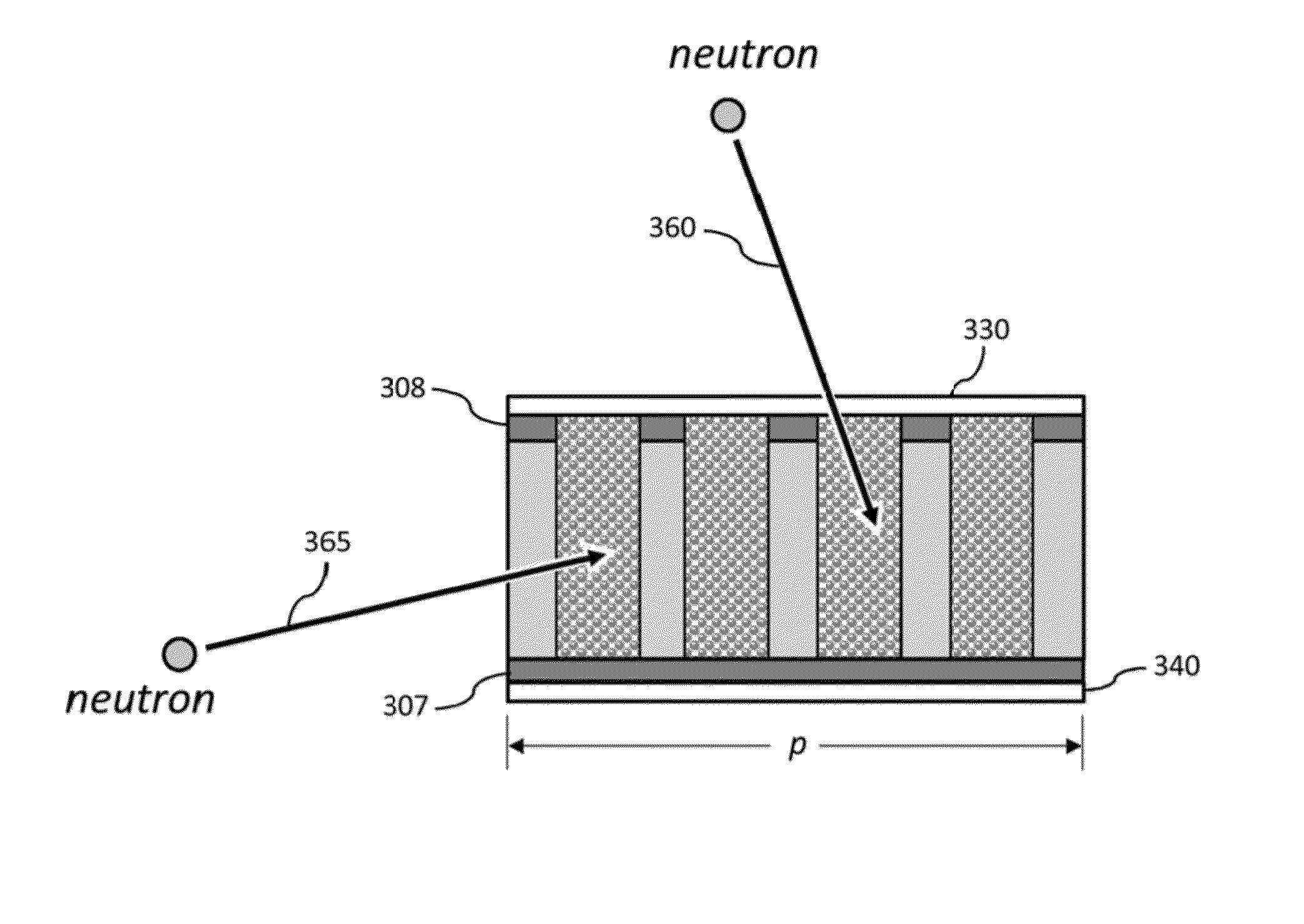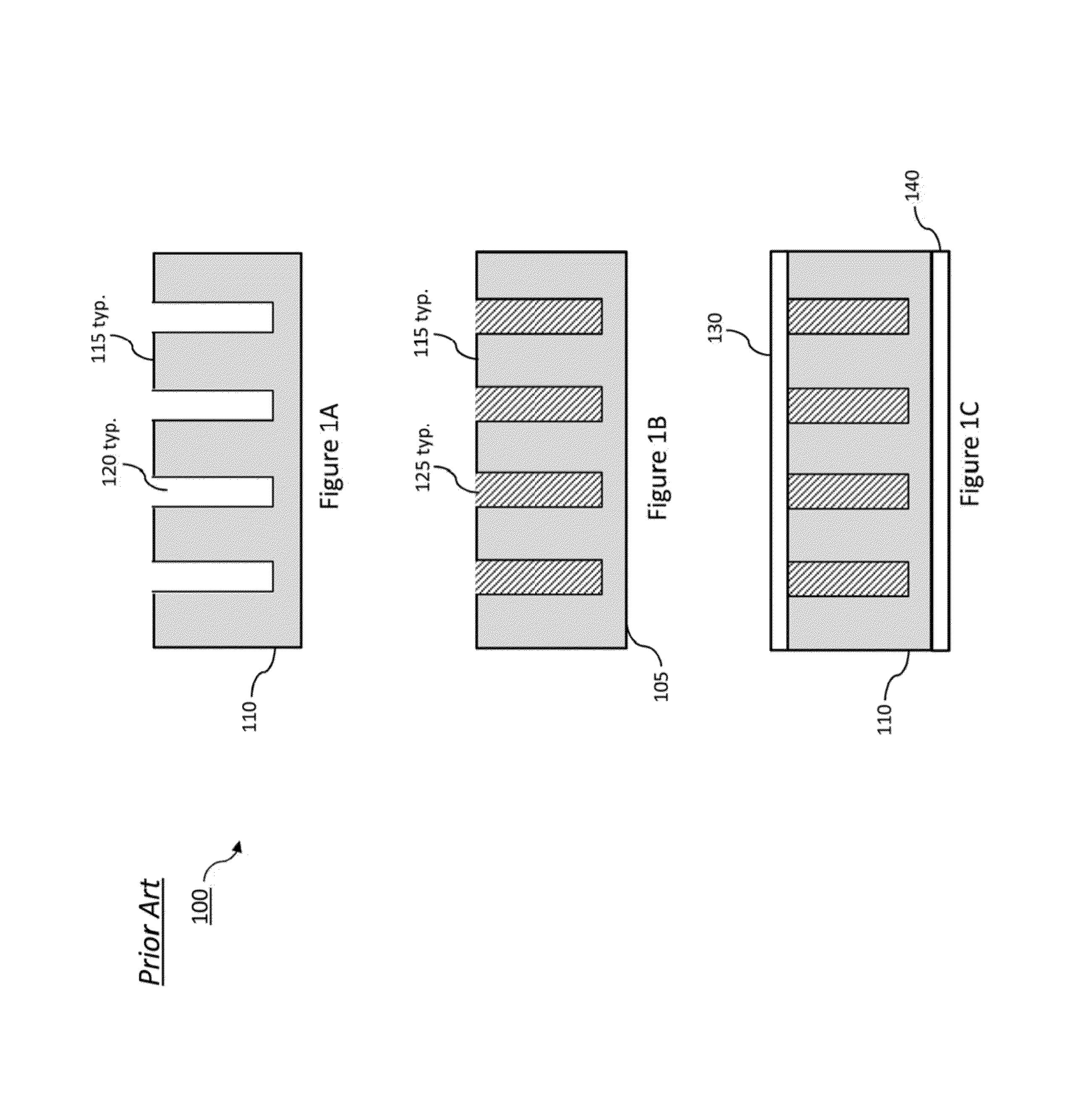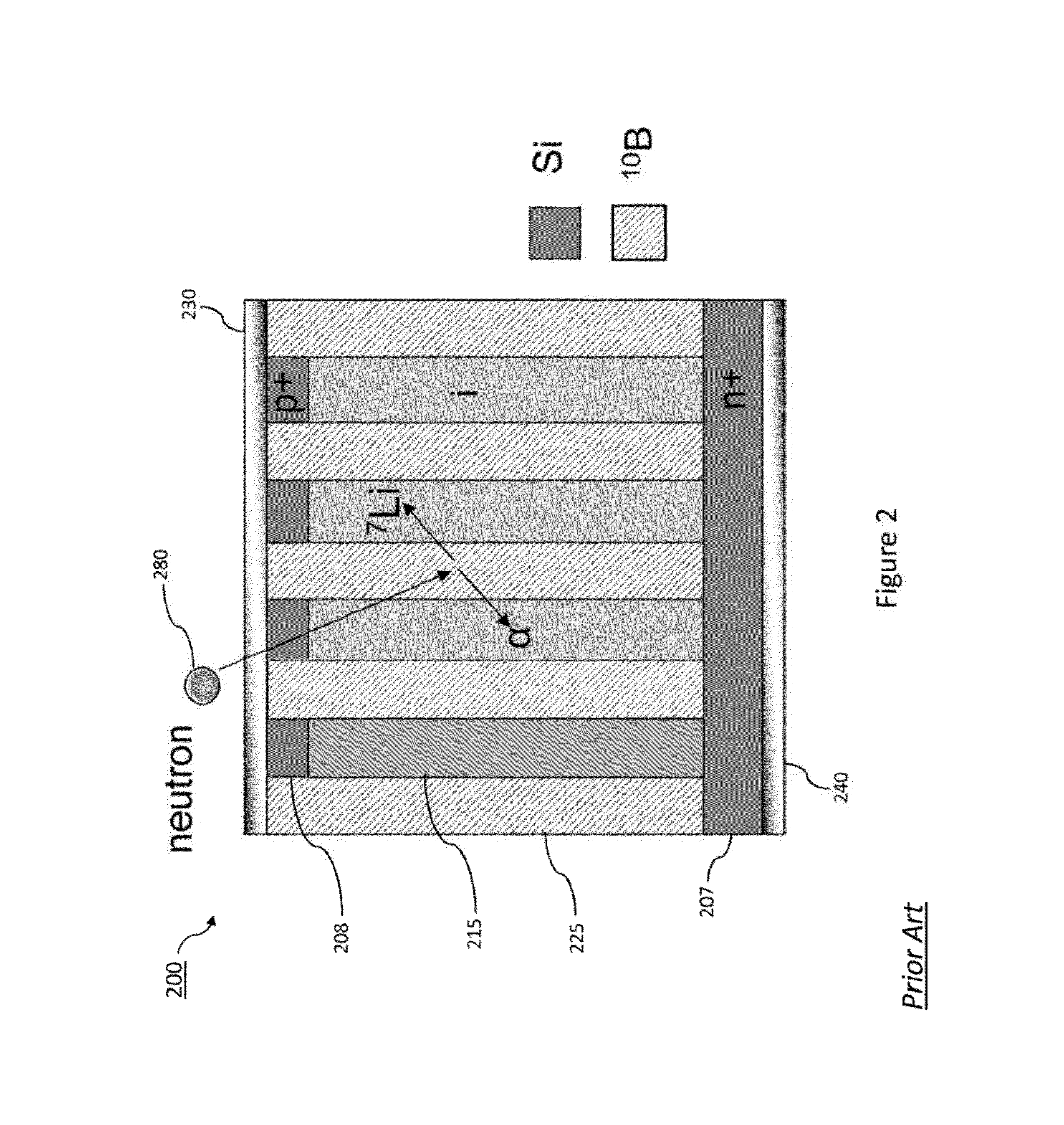Three-dimensional boron particle loaded thermal neutron detector
a three-dimensional, boron particle technology, applied in the direction of semiconductor devices, electrical equipment, semiconductor devices, etc., can solve the problems of limited prior art, world supply, and present radiation detection technology suffers from flexibility and scalability issues
- Summary
- Abstract
- Description
- Claims
- Application Information
AI Technical Summary
Benefits of technology
Problems solved by technology
Method used
Image
Examples
embodiment 900
[0097]Turning now to FIG. 9, a multi-pixel detector embodiment 900 is shown that has the property of converting an incident neutron beam with spatial information to an optical image with a one-to-one coherent mapping capability. The basic module can be viewed as a micro-channel plate (MCP), comprised of interspersed arrays of nano-powder columns with arrays of fiber-optic scintillometers. In essence, the periodic structure is a multi-pixel analog to a single pillar of nano-powder, placed adjacent to a single optical fiber scintillometer. When the optical output of this powder-loaded, fiber arrayed scintillometer MCP is combined with an image intensifier, an equivalent neutron-to-optical image intensifier is realized. The overall device can be of any general shape, including rectangular, square, circular, etc.
[0098]A neutron beam can be incident upon the device in two different orientations (recall FIG. 3C). In one configuration, a neutron beam 960 is incident upon the device in a di...
embodiment 1000
[0110]Turning now to FIG. 10A and FIG. 10B, a typical embodiment 1000 of this sensor is shown. FIG. 10B is a cross-sectional view, corresponding to an A-A sectioned cut of the fiber structure in FIG. 10A. The neutrons 1065 to be detected are typically incident in a direction normal to the long axis of the structure. This beam alignment is similar to that depicted in FIG. 3C and FIG. 4C, where a neutron beam (365 and 465, respectively) impinges upon the sensor from the side of the structure. The overall structure 1000 can be of lengths ranging from mm's to km's, and, can be of diameters in the range of mm's to cm's.
[0111]The basic structure is comprised of two classes of flexible, fiber-based components: (1) a central hollow fiber, loaded with neutron conversion nano-powder material 1030; and (2) an ensemble of optical fibers, each comprised of scintillation materials 1015, that are parallel to, and, surround the powder-loaded central fiber. An optical detector 1080, whose function i...
second embodiment
[0122]One can increase the accuracy with which the temporal correlation function is determined by modifying the optical fiber configuration with respect to the overall structure. Recall above, that a set of long fibers are placed along the length of the fiber, as shown in FIG. 10B. Therefore, the total fiber length is equal to the length of the powder-filled tube. However, in another embodiment, a single fiber (or a small set of fibers), can be wound around the powder-filled tube and along its length in a helical pattern, as in a spool. In this case, the total fiber length increases roughly by the number of fibers in the former embodiment. Therefore, the ability to determine the physical location of an event is enhanced, given that the temporal photon delay along the length of the tube is now dictated by the pitch of the helical pattern and the outside diameter of the fiber(s); and, not by the physical length of the tube. As an example, assuming a 1 mm (1000 μm) diameter powder-fill...
PUM
 Login to View More
Login to View More Abstract
Description
Claims
Application Information
 Login to View More
Login to View More - R&D
- Intellectual Property
- Life Sciences
- Materials
- Tech Scout
- Unparalleled Data Quality
- Higher Quality Content
- 60% Fewer Hallucinations
Browse by: Latest US Patents, China's latest patents, Technical Efficacy Thesaurus, Application Domain, Technology Topic, Popular Technical Reports.
© 2025 PatSnap. All rights reserved.Legal|Privacy policy|Modern Slavery Act Transparency Statement|Sitemap|About US| Contact US: help@patsnap.com



